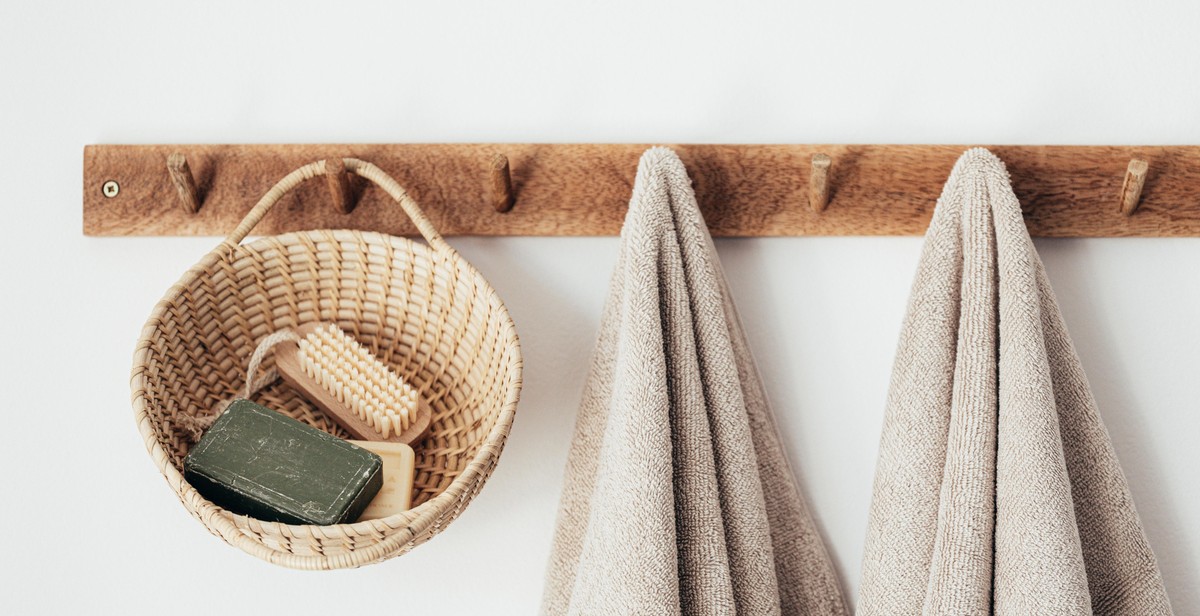Introduction
As the world becomes increasingly conscious of the impact of human activities on the environment, the fashion industry is also taking steps towards sustainability. Sustainable fashion is a movement towards ethical fashion choices that prioritize the well-being of the environment, workers, and consumers.
What is Sustainable Fashion?
Sustainable fashion refers to the practice of designing, producing, and consuming clothing in a way that has a minimal impact on the environment and promotes social responsibility. It involves utilizing eco-friendly materials, reducing waste, and ensuring fair labor practices throughout the supply chain.
Why is Sustainable Fashion Important?
Sustainable fashion is crucial because the fashion industry is known to be one of the most polluting industries in the world. The production and disposal of clothing have significant environmental impacts, including water and air pollution, greenhouse gas emissions, and waste generation. Additionally, unethical labor practices, including child labor and exploitation of workers, are prevalent in the fashion industry. By embracing sustainable fashion choices, we can reduce the negative impact of fashion on the environment and promote ethical practices throughout the industry.

How to Curate a Sustainable Wardrobe: Embracing Ethical Fashion Choices
Clothing is an essential part of our lives, and it is crucial to make sustainable and ethical fashion choices. The fashion industry is notorious for its negative impact on the environment, and it is essential to take steps towards sustainability. Curating a sustainable wardrobe involves making conscious decisions about the clothes we wear and how we wear them. Here are some tips on how to curate a sustainable wardrobe:
Assess Your Current Wardrobe
The first step towards curating a sustainable wardrobe is to assess your current clothing collection. Take a look at your wardrobe and identify the clothes you wear frequently and the ones that have been sitting untouched for months. Donate or sell the clothes you do not wear to reduce textile waste. The clothes that you wear frequently should be the foundation of your sustainable wardrobe.
Choose Quality over Quantity
Invest in high-quality clothes that are durable and can withstand multiple wears. High-quality clothes last longer, reducing the need to replace them frequently. When shopping for clothes, look for materials that are sustainable, such as organic cotton, linen, and hemp. Also, choose timeless designs that are not trend-driven, ensuring that you can wear them for years to come.
Shop from Ethical Brands
Support ethical brands that prioritize sustainability and ethical labor practices. Research the brand’s sustainability practices, such as their use of sustainable materials, their manufacturing processes, and their packaging. Choose brands that are transparent about their sustainability practices and are committed to reducing their environmental impact.
Buy Second-Hand Clothing
Buying second-hand clothes is an excellent way to reduce textile waste and save money. Thrift stores, consignment shops, and online marketplaces such as Poshmark and Depop are great places to find second-hand clothes. You can also organize clothing swaps with friends and family to exchange clothes you no longer wear.
Rent Clothes for Special Occasions
Renting clothes for special occasions is a sustainable alternative to buying new clothes. Rental services such as Rent the Runway and Armoire offer a wide range of clothes for rent, from formal wear to everyday clothing. Renting clothes reduces the need to buy clothes that you may only wear once, reducing textile waste and saving money.
Take Care of Your Clothes
To extend the life of your clothes, take care of them properly. Follow the care instructions on the label, and avoid over-washing or over-drying your clothes. Repair clothes that have minor damages instead of throwing them away. Proper care of your clothes ensures that they last longer, reducing the need to replace them frequently.
Curating a sustainable wardrobe is a journey that requires conscious decisions and a commitment to sustainability. By assessing your current wardrobe, choosing quality over quantity, shopping from ethical brands, buying second-hand clothes, renting clothes for special occasions, and taking care of your clothes, you can curate a sustainable wardrobe that is both stylish and eco-friendly.

Benefits of a Sustainable Wardrobe
A sustainable wardrobe is not just about fashion, it is about making a positive impact on the environment, society, and yourself. Here are some of the benefits of embracing ethical fashion choices:
Environmental Benefits
- Reduces carbon footprint: Sustainable fashion is made from eco-friendly materials that require less energy to produce and transport, resulting in lower greenhouse gas emissions.
- Conserves natural resources: Sustainable fashion uses materials that are responsibly sourced and produced, reducing the exploitation of natural resources.
- Reduces waste: Sustainable fashion is designed to last longer, reducing the amount of clothing that ends up in landfills.
- Minimizes water usage: Sustainable fashion uses eco-friendly materials that require less water to produce, reducing water waste.
Social Benefits
- Supports fair labor practices: Sustainable fashion is often produced in factories that prioritize fair labor practices, ensuring workers are paid fairly and work in safe conditions.
- Empowers local communities: Sustainable fashion often supports small businesses and local communities, creating jobs and boosting local economies.
- Reduces exploitation: Sustainable fashion uses materials that are responsibly sourced, reducing the exploitation of workers and communities that are often affected by the fashion industry.
Personal Benefits
- Higher quality clothing: Sustainable fashion is often made from high-quality materials that are designed to last longer, reducing the need to constantly replace clothing.
- Unique style: Sustainable fashion often features unique designs and styles that are not mass-produced, allowing individuals to express their personal style in a more unique way.
- Conscious consumerism: Sustainable fashion allows individuals to make conscious choices about the clothing they purchase, aligning their values with their actions.
- Reduced exposure to toxins: Sustainable fashion often uses materials that are free from harmful chemicals and toxins, reducing the exposure of individuals to these substances.
| << Back to Introduction | Continue to Part 2 >> |

Challenges of Building a Sustainable Wardrobe
Building a sustainable wardrobe is not an easy task. It comes with a set of challenges that can make it difficult for people to embrace ethical fashion choices. Some of the major challenges that people face when building a sustainable wardrobe include:
Higher Costs
One of the major challenges of building a sustainable wardrobe is the higher cost of sustainable fashion. Sustainable clothing is typically more expensive than fast fashion, which can make it difficult for people on a tight budget to invest in sustainable fashion choices. However, investing in quality pieces that will last longer can ultimately save money in the long run.
Limited Options
Another challenge of building a sustainable wardrobe is the limited options available. Unlike fast fashion, sustainable fashion is not as widely available, which can make it difficult for people to access sustainable clothing options. However, as the demand for sustainable clothing continues to grow, more brands are starting to offer sustainable options to their customers.
Lack of Awareness and Education
Many people are not aware of the impact that their clothing choices have on the environment. This lack of awareness and education can make it difficult for people to make informed decisions about their fashion choices. However, as more people become aware of the impact of fast fashion on the environment, they are starting to seek out sustainable fashion options.
Despite these challenges, building a sustainable wardrobe is not impossible. By investing in quality pieces that will last longer, seeking out sustainable clothing options, and educating yourself about the impact of fast fashion on the environment, you can make a positive impact on the world while still looking stylish.

Conclusion
Curating a sustainable wardrobe is not just a trend but a necessity in today’s world. It is not only about reducing our carbon footprint but also about supporting ethical fashion choices that promote fair labor practices and sustainability.
By embracing ethical fashion choices, we can make a positive impact on the environment and the people who make our clothes. We can reduce the amount of waste we produce, save money, and create a wardrobe that reflects our values and personality.
Final Thoughts
Creating a sustainable wardrobe is a journey that requires dedication and patience. It may take time to find the right brands and pieces that align with your values, but it is worth it in the end. Remember to prioritize quality over quantity, invest in timeless pieces, and take care of your clothes to make them last longer.
As consumers, we have the power to drive change in the fashion industry by supporting sustainable and ethical fashion choices. Let us continue to educate ourselves and others about the importance of sustainability and make conscious choices that benefit both ourselves and the planet.
References
- Greenpeace. (2021). Detox Campaign. Retrieved from https://www.greenpeace.org/international/campaign/detox/
- McKinsey & Company. (2020). The State of Fashion 2021. Retrieved from https://www.mckinsey.com/business-functions/marketing-and-sales/our-insights/the-state-of-fashion-2021
- United Nations Environment Programme. (2018). Factsheet: Sustainable Fashion. Retrieved from https://www.unenvironment.org/resources/factsheet/sustainable-fashion
